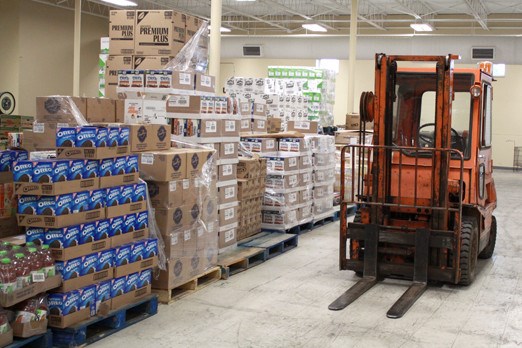The number of people using food banks in Northwestern Ontario continues to rise, a situation one local official is calling a crisis.
While some food banks in the region may have seen a drop in usage, Regional Food Distribution Association executive director Volker Kromm said overall they are up about 3,000 people and that is a lot of mouths to feed.
“To me, that’s a crisis situation,” he said. “Right now we have 13,000 people a month that are accessing those services.”
Food banks were designed to be short-term emergency measures but Kromm said people come back two or three times per month.
“They’re not able to survive on the same amount of food anymore because they’re now dependent on the food bank system to survive, which tells me they’re in a crisis situation,” he said. “They’re either at the minimum wage level or their unemployed, underemployed; they just can’t make ends meet.”
Food banks are trying to meet the demand by either giving out less food or purchasing more food because their donations don’t keep up with the demand. And there are some periods where there is no food.
Changes have to be made to the infrastructure of social assistance, Kromm said.
“That’s what we’re waiting for. Those people that are in the vulnerable stage where they are trapped by their circumstances won’t be able to get out without those significant changes,” he said.
Nationally, food bank usage is up 2.4 per cent with provinces like Alberta, Saskatchewan, Newfoundland and Labrador and Quebec all seeing decreases. Food bank use is still 31 per cent higher than it was at the start of the recession in 2008, according to a study by Food Banks Canada.
Food bank numbers continue to rise in a city like Thunder Bay because of a combination of factors, including inadequate social assistance and underemployment, said Saku Pinta, social researcher and planner with the Lakehead Social Planning Council.
Many traditional manufacturing jobs have been replaced with low-paying service sector jobs, he said.
“A lot of people are being compelled to take lower paying jobs and these sorts of things make it harder for people to make ends meet,” he said. ‘That combined with the rising price of necessities – food, fuel, housing – all serve to create these kinds of problems.”
Pinta said that social assistance rates haven’t been changed in 20 years and prices continue to increase.
“People receiving social assistance right now are worse off than they were in Mike Harris’ second term when adjusted for inflation. That’s a revealing number, I think,” he said.
And while some might believe the recession is over, Pinta said economic forecasting isn’t a science and he can easily see food bank usage continue to rise and said the forecast doesn’t look good.
“Given the fact the federal government is making changes to employment insurance and the fact there are cuts in Ontario with the new austerity budget, the outlook doesn’t look very well for people, especially on low-income and the working poor,” he said.
